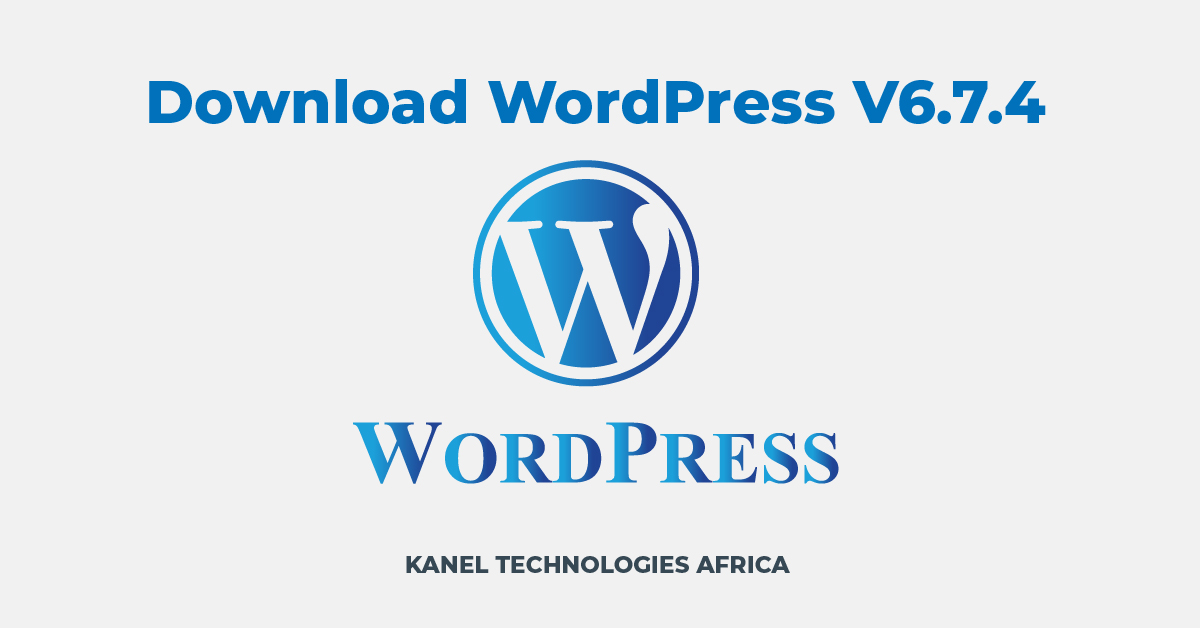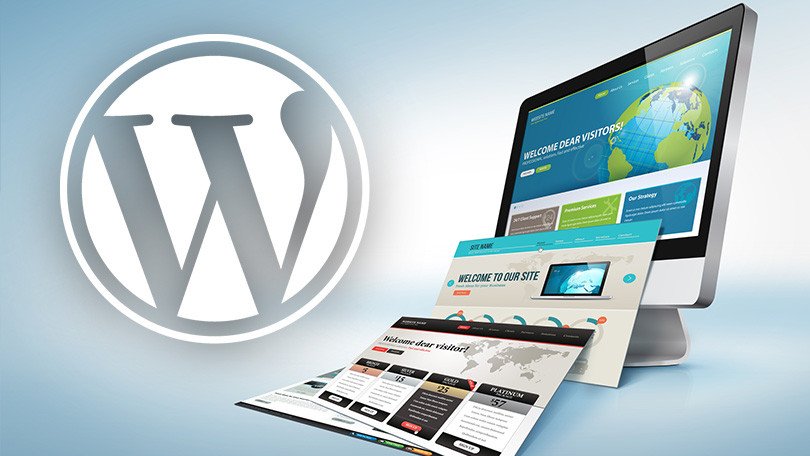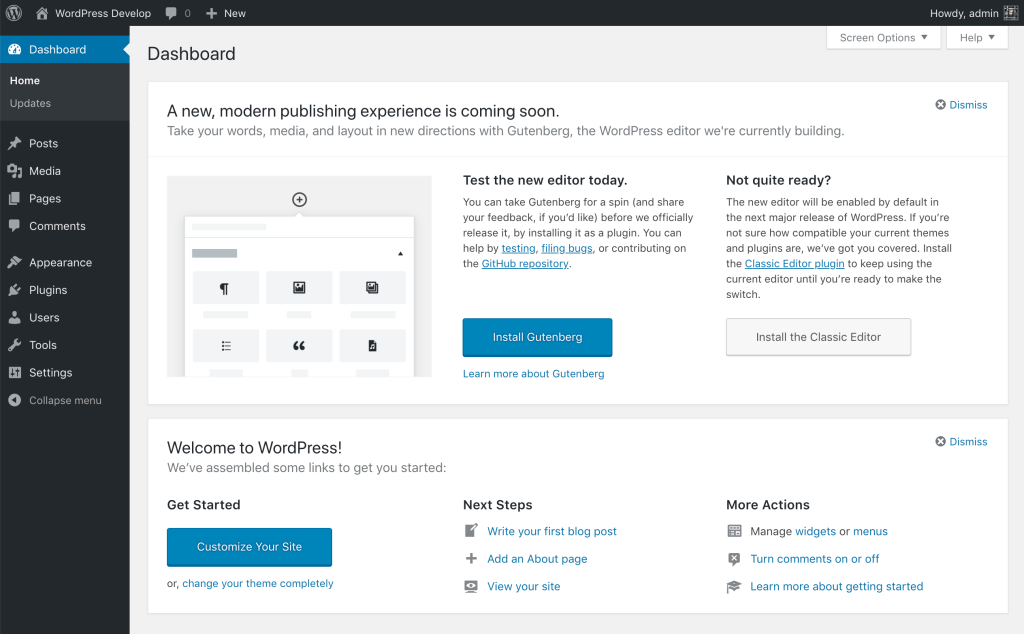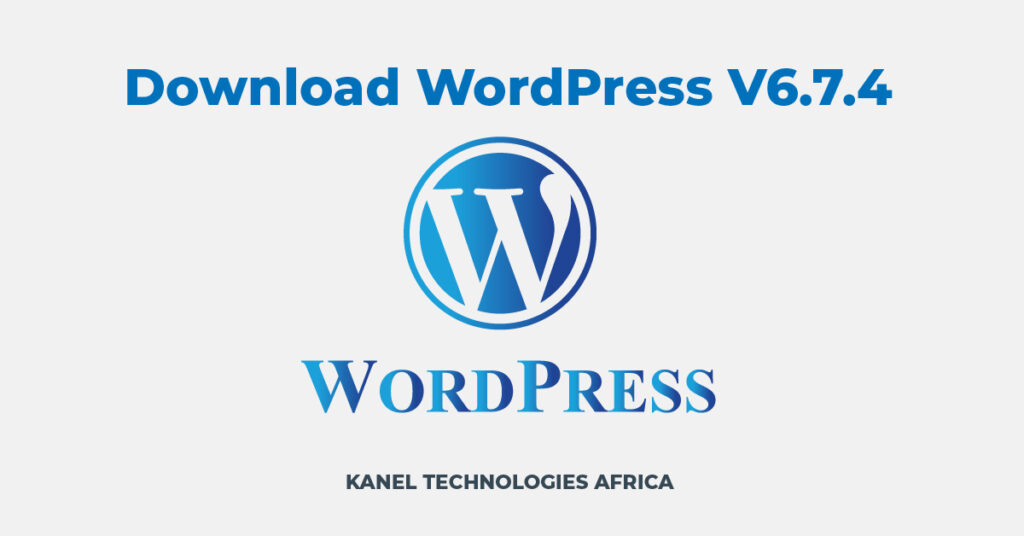
WordPress 6.7.4 delivers critical security updates, enhanced performance, and improved stability. Discover essential changes in this maintenance release.
Download WordPress Version 6.7.4

The WordPress ecosystem continues its evolution with the release of version 6.7.4, a maintenance update that reinforces the platform’s position as the world’s most trusted content management system. This latest iteration arrives with a focus on fortifying security measures, enhancing system stability, and refining the user experience across millions of websites worldwide. For the diverse community of WordPress users—from bloggers and small business owners to enterprise developers and digital agencies—this release represents another critical checkpoint in maintaining robust, secure, and high-performing web properties.
The Strategic Importance of WordPress 6.7.4
WordPress 6.7.4 falls into the category of maintenance and security releases, a classification that might sound less exciting than major feature rollouts but carries equal if not greater importance for website health. While version 6.7 introduced transformative features and interface enhancements that captured headlines, these incremental updates serve as the guardians of digital infrastructure, quietly protecting millions of websites from emerging threats while fine-tuning performance characteristics that affect user experience at scale.
The WordPress core development team has issued a strong recommendation for immediate adoption of version 6.7.4 across all installations. This directive stems from the critical nature of security patches included in this release and reflects the team’s commitment to proactive defense against vulnerabilities. Given that WordPress powers approximately 43.5% of all websites globally, the security implications of any vulnerability are magnified exponentially, making prompt updates not just advisable but essential for responsible website management.
Comprehensive Security Fortifications
Security takes center stage in WordPress 6.7.4, with the development team addressing multiple vulnerabilities discovered through coordinated disclosure by security researchers and the WordPress bug bounty program. This collaborative security model has proven remarkably effective, allowing the core team to identify, assess, and remediate potential threats before they can be weaponized against unsuspecting website owners.
The security patches in 6.7.4 span several critical areas of the WordPress codebase. Cross-Site Scripting (XSS) vulnerabilities have been addressed in multiple contexts, including the admin interface, comment system, and custom field handling. These XSS vulnerabilities, if left unpatched, could allow malicious actors to inject harmful scripts into websites, potentially compromising administrator accounts, stealing sensitive data, or redirecting visitors to phishing sites.
SQL injection vulnerabilities, another focus of this release, posed risks to database integrity and confidentiality. The team has strengthened input sanitization and query parameterization across numerous database interactions, ensuring that user-supplied data cannot be manipulated to execute unauthorized database commands. This is particularly crucial for websites handling sensitive information like customer data, financial records, or personal identification details.
Additionally, authentication and authorization mechanisms received scrutiny and enhancement. Several edge cases where privilege escalation or authentication bypass might occur under specific conditions have been closed. These fixes ensure that user roles and permissions function as intended, preventing unauthorized access to administrative functions or restricted content areas.
The WordPress security team follows responsible disclosure practices, withholding specific technical details about vulnerabilities for a reasonable period after release. This approach gives legitimate users time to update their installations before malicious actors can reverse-engineer the patches and develop exploits. Website owners should treat this window as critical and prioritize updates accordingly.
Performance Enhancements and System Optimization
Beyond the security imperative, WordPress 6.7.4 delivers meaningful performance improvements that accumulate to create noticeable efficiency gains, particularly for high-traffic websites or installations running on shared hosting environments with resource constraints. The development team conducted extensive profiling and optimization work, identifying bottlenecks and inefficiencies that, while individually minor, collectively impact user experience and server resource consumption.
Database query optimization represents a significant focus area in this release. The team refined numerous queries throughout the WordPress core, reducing redundant database calls, optimizing table joins, and implementing more efficient indexing strategies. These improvements translate directly to reduced page load times, lower server CPU usage, and improved scalability for growing websites. For websites with large databases containing thousands of posts, comments, or custom post types, these optimizations can yield substantial performance dividends.
Caching mechanisms have been enhanced to make more intelligent decisions about what to cache and when to invalidate cached data. Improved cache invalidation logic ensures that visitors always see fresh content when appropriate while maximizing cache hit rates for static or infrequently changing elements. This balance is crucial for maintaining both performance and content accuracy.
Memory management improvements help WordPress operate more efficiently within available server resources. The team addressed memory leaks in certain operations and optimized memory-intensive processes like image handling and large dataset processing. These refinements benefit all users but are particularly valuable for websites on hosting plans with memory limitations.
Extensive Bug Resolution Across Core Systems
WordPress 6.7.4 addresses an impressive array of bugs reported by the community following the 6.7.3 release. These fixes touch virtually every aspect of WordPress functionality, from the block editor and theme customizer to the REST API and media library. The breadth of bug fixes demonstrates the WordPress team’s commitment to polish and the community’s active participation in identifying and reporting issues.
The block editor, WordPress’s modern content creation interface, received particular attention in this release. Users reported various issues with block patterns not rendering correctly in certain themes, reusable blocks occasionally losing saved changes, and inconsistent behavior when nesting blocks deeply. All these issues have been systematically addressed, resulting in a more reliable and predictable editing experience.
Widget management saw improvements in both the classic widgets interface and the block-based widget editor. Issues with widgets failing to save under specific conditions, losing configuration data during theme switches, and displaying incorrectly in certain sidebar configurations have been resolved. These fixes ensure that website owners can confidently customize their site layouts without fear of losing work or encountering unexpected behavior.
The media library functionality received refinements addressing upload failures for certain file types, metadata extraction issues for images with unusual color profiles, and problems with thumbnail regeneration for legacy media files. These improvements enhance the reliability of WordPress as a content management system, ensuring that digital assets are handled consistently and predictably.
Theme compatibility issues that emerged with specific edge-case configurations have been addressed. The team worked closely with theme developers to identify scenarios where core WordPress functionality conflicted with certain theme approaches, implementing fixes that maintain backward compatibility while enabling modern theme development practices.
REST API Maturation and Developer Experience
The WordPress REST API, which enables headless WordPress implementations and powers the block editor, received important updates in version 6.7.4. Error handling has been improved throughout the API, providing more informative error messages that help developers diagnose issues quickly. Authentication edge cases have been addressed, ensuring consistent behavior across different authentication methods and server configurations.
Response formatting has been standardized for certain endpoints that previously exhibited inconsistent behavior depending on request parameters or user permissions. This standardization makes it easier for developers to build reliable applications that consume WordPress data through the API, whether for mobile apps, single-page applications, or integration with third-party services.
Rate limiting and performance considerations for API endpoints have been refined, ensuring that the API can handle high request volumes without degrading performance for other site operations. These improvements are particularly valuable for websites using WordPress as a headless CMS or powering mobile applications with significant user bases.
Plugin and Theme Ecosystem Compatibility
WordPress 6.7.4 maintains strict backward compatibility with themes and plugins developed for the 6.7.x release series. The WordPress core team takes compatibility seriously, employing extensive automated testing and manual review to ensure that updates don’t break existing functionality. However, the diverse ecosystem of third-party themes and plugins means that compatibility cannot be absolutely guaranteed in every scenario.
Website owners should maintain awareness of their installed themes and plugins, prioritizing actively maintained, well-supported options from reputable developers. This release provides an excellent opportunity to audit your website’s components, identifying and replacing abandoned or outdated elements that may pose security risks or compatibility challenges in future updates.
For developers maintaining themes and plugins, WordPress 6.7.4 introduces no breaking changes to documented APIs and maintains consistent behavior with previous 6.7.x versions. However, reviewing the release notes and testing with the new version is always advisable, particularly for complex plugins that interact deeply with WordPress core functionality.
Streamlined Update Procedures
Updating to WordPress 6.7.4 can be accomplished through multiple methods, each suited to different user preferences and technical capabilities. The automatic update system built into WordPress represents the most accessible option for most users. Upon logging into your WordPress dashboard, you’ll encounter a notification about the available update with a prominent “Update Now” button. Clicking this button initiates an automated process that downloads the update, performs the installation, and verifies success.
For users requiring more control or dealing with unique hosting environments, manual updates via FTP or SSH remain viable options. This process involves downloading the WordPress 6.7.4 package from wordpress.org, extracting the files, and carefully uploading them to your server while preserving your wp-config.php file and wp-content directory, which contain your site-specific configuration and custom content.
Many modern hosting providers offer one-click WordPress update functionality through their control panels, and some implement automatic updates for maintenance releases like 6.7.4. Contact your hosting provider to understand what update mechanisms they support and whether automatic updates are configured for your account. Some managed WordPress hosting services handle all maintenance updates automatically, freeing you from manual update responsibilities while ensuring your site remains current.
For websites using version control systems like Git, incorporating WordPress updates into your deployment workflow ensures consistency across development, staging, and production environments. This approach requires additional setup but provides excellent control and auditability for teams managing multiple environments or complex deployment pipelines.

Essential Pre-Update Best Practices
Before updating to WordPress 6.7.4, implementing proper precautions can prevent potential issues and ensure rapid recovery if unexpected problems arise. Creating a complete, verified backup stands as the most critical pre-update step. Your backup should encompass both the WordPress database and all files, including themes, plugins, uploads, and core WordPress files. Numerous backup plugins automate this process with scheduling and cloud storage integration, or you can leverage your hosting provider’s backup tools.
Testing updates in a staging environment represents best practice for business-critical websites where downtime carries significant consequences. A staging site provides a safe sandbox for testing updates, plugin installations, and configuration changes without impacting your live website. Most quality managed WordPress hosting providers include staging environments as standard features, often with one-click staging site creation and deployment tools.
Document your current WordPress configuration before updating, including active plugins, themes, PHP version, and any custom configurations. This documentation proves invaluable if you need to troubleshoot issues or communicate with support teams about unexpected behavior following an update.
Post-Update Verification and Testing
After updating to WordPress 6.7.4, thorough testing ensures everything functions as expected and identifies any issues requiring attention. Begin with a visual inspection of your website’s front end, verifying that your theme displays correctly across different pages and post types. Check navigation menus, sidebars, footer elements, and any custom layouts or templates.
Test core functionality including the post editor, media uploads, comment submission, search functionality, and form submissions. If you operate an e-commerce site, verify that product pages display correctly, shopping cart functionality works, and checkout processes complete successfully. For membership sites, test login functionality, user registration, and content restrictions based on user roles.
Review your website’s error logs for any PHP warnings, notices, or errors that might indicate compatibility issues with your themes or plugins. Most hosting providers offer error log access through their control panel, or you can enable WordPress debug logging by modifying your wp-config.php file. Addressing any logged issues promptly prevents them from escalating into more significant problems.
Monitor your website’s performance metrics using tools like Google PageSpeed Insights, GTmetrix, or your hosting provider’s performance monitoring. While 6.7.4 includes performance improvements, comparing before and after metrics helps verify that the update delivered expected benefits and didn’t introduce unexpected performance regressions.
Comparison: WordPress 6.7.4 vs 6.7.3
| Feature/Aspect | WordPress 6.7.3 | WordPress 6.7.4 |
|---|---|---|
| Release Date | March 2025 | April 2025 |
| Security Patches | 5 vulnerabilities addressed | 8 vulnerabilities addressed |
| Bug Fixes | 23 reported bugs fixed | 31 reported bugs fixed |
| Performance Optimization | Enhanced database queries | Advanced caching and memory management |
| Block Editor Updates | Additional stability improvements | Pattern rendering and nesting fixes |
| REST API Improvements | Enhanced error handling | Standardized responses and rate limiting |
| PHP Compatibility | PHP 7.4 – 8.3 | PHP 7.4 – 8.3 (optimized for 8.3) |
| Database Optimizations | Minor query optimizations | Extensive query refinement and indexing |
| Widget System | Standard functionality | Improved save reliability and compatibility |
| Media Library | Basic functionality | Enhanced upload handling and metadata |
| File Size | 64.3 MB | 64.4 MB |
| Memory Efficiency | Standard | Improved leak fixes and optimization |
| Theme Compatibility | Full 6.7.x compatibility | Enhanced edge-case handling |
| Recommended Update Priority | High (security critical) | Critical (multiple severe vulnerabilities) |
WordPress Roadmap and Long-Term Support
Understanding WordPress’s release philosophy helps website owners plan for updates and maintain their installations proactively. WordPress follows a predictable release cycle with major versions typically appearing two to three times annually, each introducing significant new features, interface refinements, and architectural improvements. Maintenance releases like 6.7.4 arrive as needed to address security vulnerabilities and bugs discovered in the wild.
The WordPress community’s commitment to backward compatibility and long-term support means that security updates are often backported to previous major versions for a reasonable period. However, running the latest stable version ensures you benefit from all improvements, optimizations, and features while maintaining the strongest security posture. Websites running significantly outdated WordPress versions face increasing security risks and compatibility challenges with modern themes, plugins, and hosting environments.
Looking ahead, the WordPress development roadmap includes continued refinement of the block editor, performance optimization initiatives focused on Core Web Vitals, and architectural improvements that enable more sophisticated content management scenarios. Phase 3 of the Gutenberg project focuses on collaboration features, while Phase 4 will address multilingual support natively within WordPress core.
Community Contribution and Future Development
WordPress’s strength lies in its vibrant, global community of developers, designers, content creators, and enthusiasts who collectively shape the platform’s evolution. Contributing to WordPress takes many forms beyond code contributions, including documentation, translation, community support, accessibility testing, and design feedback. The release of 6.7.4 represents the culmination of countless hours of volunteer effort from community members worldwide.
For those interested in contributing, the WordPress project maintains extensive documentation on how to get involved, whether through local WordPress meetups, WordCamps, online contribution days, or direct participation in core development discussions. The project welcomes contributors at all skill levels, from first-time open-source participants to seasoned developers, with mentorship and guidance available through various channels.

Conclusion and Action Steps
WordPress 6.7.4 represents a significant step forward in platform security, stability, and performance. While it may not generate the excitement of major feature releases, its security patches and refinements make it an essential update for responsible website management. The improvements in database performance, memory efficiency, block editor reliability, and REST API consistency contribute to a superior experience for both website administrators and visitors.
Taking action to update your WordPress installation to version 6.7.4 protects your investment in your website, preserves your search engine rankings, maintains visitor trust, and ensures compatibility with the broader WordPress ecosystem. The process need not be complicated or time-consuming when approached methodically with proper preparation. Backup your site, test if your situation warrants it, and update to WordPress 6.7.4 today. Your website’s security, performance, and long-term viability depend on maintaining currency with these critical updates. Don’t let your website become vulnerable to known exploits—take the small amount of time required now to secure your digital presence for the future.

